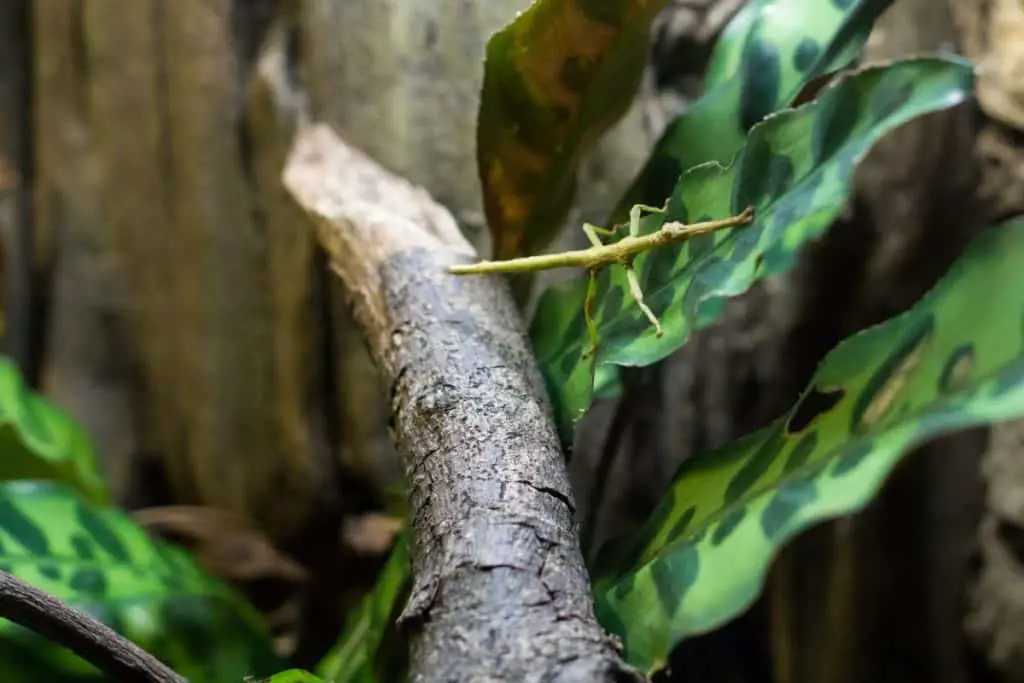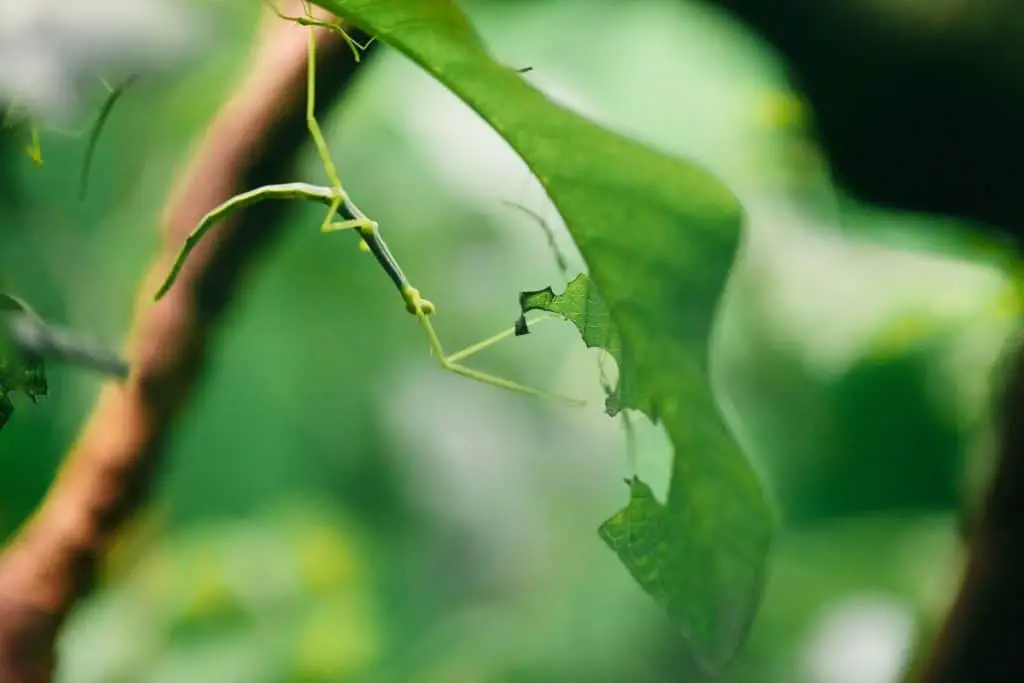Owning a stick insect can be a fun and rewarding experience. However, like with any pet, it’s important to understand their basic needs to ensure that they can stay healthy and happy for years to come.
One of the most important factors when caring for a stick insect is its diet. And one of the most common questions that gets asked when it comes to stick insects is do they need water? and if so how much?
The short answer is yes, stick insects do need water to survive. However, the amount of water they need can vary anywhere from once a day to once a week, depending on their environment and the humidity level.
How Do Stick Insects Ingest Their Water?
Their method for sustaining themselves without a reliable water source is quite simple! They absorb most of the water they need from the leaves they consume.
This happens during digestion, as the stick insect breaks down the plants into liquid form! The moisture is then used to keep the insect hydrated and healthy, while at the same time, carefully filtering out key nutrients in the process.
However, before you start giving your stick insect a tone of leaves you need to be aware that it’s important to make sure that they are safe for consumption. Not every plant species is safe for stick insects to eat.
You also need to consider how fresh the leaves are! If your feeding your stick insects leaves “that are too old” “or slightly rotten” they can do more harm than good, and offer no nutritional value whatsoever! The same goes for the amount of water inside the leaves! The older the leaf, the less likely they are to contain water.

How To Tell If Your Stick Insect Is Dehydrated?
If your stick insect is dehydrated, there are some things to look for that will help you determine if this is the case. Some of the signs will be hard to see with the naked eye, so you’ll need to take a closer look!
If you have one we do recommend using a magnifying glass to get a better look this will make it a lot easier. However, if you don’t have one that’s ok, you can also use your cell phone by taking a photo of the stick insect and zooming in!
Now, some people would say one of the main signs of dehydration is the lack of energy! Although this can be true, the problem with this is stick insects move very slowly so trying to detect a decrease in energy can be very hard.
Instead, you should look at the skin ” this is the reason for the magnifying glass” the skin of a healthy stick insect should be smooth and shiny. So when using the magnifying glass if you notice it looks, dull, dry, or cracked, it’s likely your stick insect is dehydrated.
Another sign to look for is the antennae! The antennae on a healthy stick insect will be long and slender with no damage or deformity. If their antennae are drooping down instead of being held upright or extended outwards naturally as they should be this could be a sign of dehydration.
And finally, if your stick insect appears to be lethargic or slow-moving again it could be dehydrated. Although we did say at the start this is not a very good indication as they are usually quite slow-moving. But, if you’ve owned your stick insects for a while now you should be able to tell if they are behaving differently than usual.
- Your stick insect will have a dull color if it’s dehydrated.
- Its body will look shriveled up and wrinkled, a classic sign of dry skin.
- It may also appear to be lethargic or slow-moving if dehydrated.
- Their antennae are drooping down.
If you notice any of these symptoms, it’s important to take action right away! The best way to prevent dehydration is by providing your pet with fresh water on a regular basis.
Related Articles:
How To Keep Your Pet Stick Insect Hydrated?
If you do think your stick insect is dehydrated, it’s important to act fast. The best way to rehydrate them is by misting them with fresh water using a spray bottle.
The amount of water you use should be enough that the stick insect can absorb some through their skin but not so much that they get drenched! Try to aim for an area near the head or legs as these are areas where the skin is thinner and will be easier for them to absorb moisture from.
You could also try soaking their leaves in water before feeding them if this is more convenient for you. This will help ensure that there’s enough moisture in their diet and make sure they stay healthy and hydrated at all times.
Another option is to provide them with a shallow dish of water. In fact, if you own the “Haaniella species” of stick insects, this is the best course of action as they are known to take regular sips from standing water.
However, if you choose this option, make sure the container is shallow enough so that it cannot drown. As stick insects often have trouble judging how deep the water is, it’s important to keep this in mind when giving them access to any kind of liquid.

Do Stick Insects Need Water Everyday?
No, stick insects do not need to be provided with water every day! As long as they have access to a reliable source of hydration from their food and environment, they will typically do just fine without having to be given water daily.
In some cases, giving stick insects too much water can even be fatal. That said, it’s still important to make sure your stick insect has access to fresh water on a regular basis in order to keep them healthy and hydrated at all times.
Spraying the enclosure every few days should be enough this will help prevent any potential health issues related to dehydration!
How Long Can Stick Insects Live Without Water?
Stick insects can live for an incredibly long time without water, but it’s important to ensure their enclosure stays at the optimal humidity level for their health and well-being.
While there is no hard and fast answer as to how often you should mist your stick insect’s enclosure, a good rule of thumb is to do so anywhere between once a day and once a week.
Consideration must be taken towards the specific climate you live in as well as the time of year, with more frequency needed during high-temperature months. Additionally, the requirements of the species you have in your care should also be taken into consideration.
Whatever method you choose, it’s best to check periodically to make sure the substrate, leaves, and corners of their environment remain moist.
Conclusion
So, yes stick insects do need water to survive and can even get dehydrated if not given enough moisture in their environment. It’s important to monitor the humidity levels in their terrariums and to provide fresh leaves for them each day to help keep them hydrated.
We hope this article has helped you understand why it’s important for stick insects to stay hydrated and how to do so. With the right care, your pet should be able to thrive in its environment for many years! Thanks for reading.
Related Articles:
